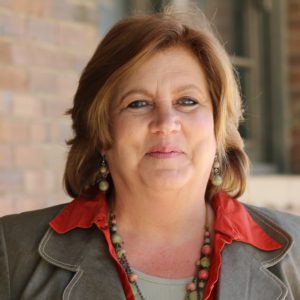Many people are still pinching themselves because 2008 turned out to be the year of the Cinderella Story – for both Fresno and Omaha.
Even after 50+ years, Omaha leaders have never taken the event for granted. Although few could imagine it elsewhere, community leaders knew change was a possibility and that it could move around like other NCAA Championship events.
With the current contract set to expire in 2010, one of the issues at the forefront was Rosenblatt Stadium, as entrenched in Omaha as the College World Series. Even with the millions of dollars in improvements over the years, at nearly 60-years-old it lacked many of the amenities fans have come to expect.
Hence, Jack Diesing, president of CWS of Omaha Inc., and city and community leaders looked at what it would take to gain a long-term contract. At some point, it became apparent that alternatives to Rosenblatt should be considered — a shocking concept to many. The very idea sparked controversy and Omaha’s mayor created the CWS oversight committee to complete an analysis and prepare a formal recommendation.
Morris Jacobs, our founder, was among the local businessmen who convinced the NCAA to bring their baseball tournament to Omaha back in 1950. We’ve been involved ever since.
From advertising to media relations, email marketing to text messaging… rainouts and game delays, announcements of tie-breaker games, ticket availability and much more, we use every imaginable and creative way to get the word out to media and fans.
Each year brings new challenges, adventures and surprises. It’s hectic, exhausting and exhilarating. We work with great people and it’s a labor of love and we wouldn’t trade the experience for the world.
Although Bozell had worked on the event since its Omaha beginnings, the stadium was a separate issue. So we watched the rather heated debate from the sidelines. That is… until the call on Valentines Day from the oversight committee asking for help with the unveiling of the committee’s final recommendation. Bozell’s first reaction? “Yikes.” Given a few political stumbles and the level of emotion surrounding the effort, we knew the road would be rocky.
The recommendation to build a new state-of-the-art stadium — since it would cost almost the same as upgrades to Rosenblatt, and position Omaha more strongly for a long-term contract with the NCAA — wasn’t an automatic home run. The CWS oversight committee, led by Ken Stinson, chairman of Kiewit, had done an extremely thorough job, but in the face of nostalgia, history and high emotion, it wasn’t certain that logic would win the day. Opposition groups had staged protests and went as far as creating a TV commercial with Kevin Costner.
We knew two things when we planned the recommendation announcement: 1) complete transparency was the only way to go (luckily the committee was of the same mind), and 2) initial vocal reaction to the idea of a new stadium built with private and public monies would be primarily negative.
A media briefing and press conference was arranged. It was carried live on radio and TV stations in Omaha. Reporters around the country wrote stories. All the documentation produced for and by the committee was posted on a website for public viewing — site comparisons, financial studies, architectural drawings, budgets and more.
A series of public meetings were held. We knew they’d be difficult, but a necessary part of the process nonetheless. We knew the meetings would be filled with opponents since they are the most anxious to speak out. Supporters generally don’t unless compelled to do so. The opposition staged well and took over the microphones when possible and intimidated supporters. The meetings were heated, but the committee consistently and calmly presented the findings, provided the rationales and did well in answering questions.
As hard as the public meetings were, they ended up being the turning point in the effort. The fact that the vocal minority presumed to speak for all Omahans angered some supporters and spurred them to action. And they began to mobilize support. They created Facebook groups and websites, gathered signatures, launched email campaigns and wrote to their city councilman. This support, combined with the committee’s calm logic and transparent approach, turned the tide of public opinion.
The news began to change. NCAA contract negotiations moved forward. By mid-May, a new downtown stadium and long-term contract seemed imminent.
On June 10, before the start of the 2008 College World Series, the NCAA signed an unprecedented 25-year contract with Omaha — five years longer than most people expected. Amazing, given that no other NCAA event has a home the way Omaha has become to the College World Series.
In 1950, attendance was a mere 17,805. For the first 10 years, the event lost money. But Omaha supported it financially and nurtured it with its love of the game and community spirit. That spirit and passion was so evident this year through the dedication and vision of community leaders who stepped up to the plate time and time again to make sure Omaha remains the “home” of the NCAA Men’s College World Series for generations to come.
Like Fresno, Omaha had its own Cinderella story. Thankfully, the glass slipper fits perfectly.




Pingback: A Change for the Better – Insights – Bozell – Integrated Marketing Services with Offices in Omaha and Kansas City